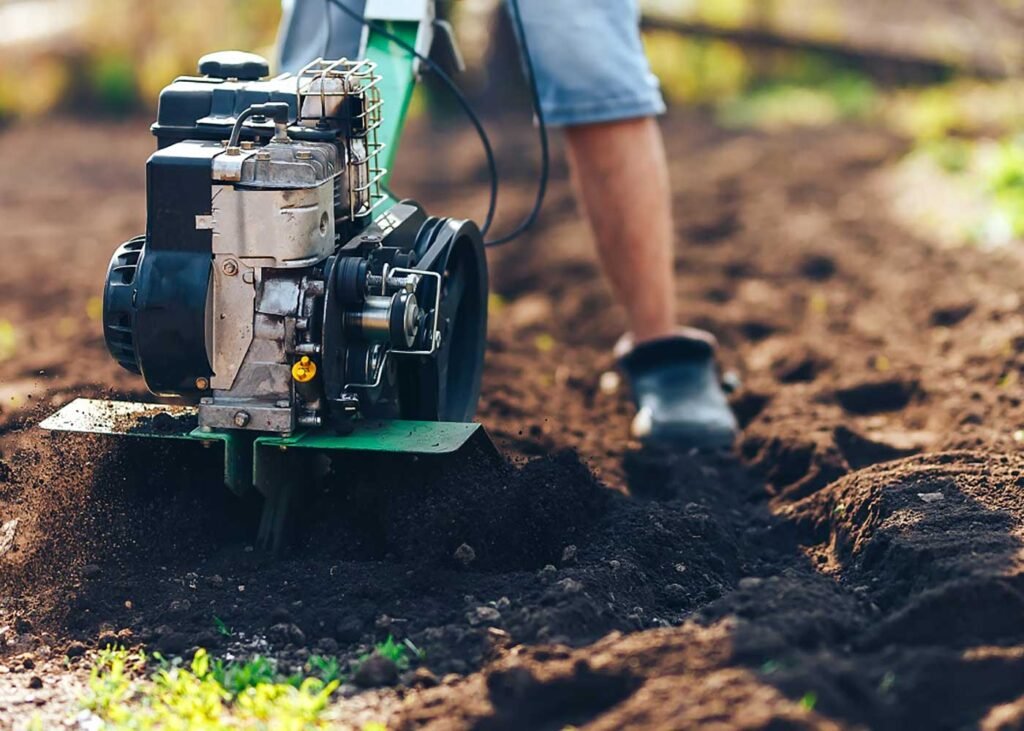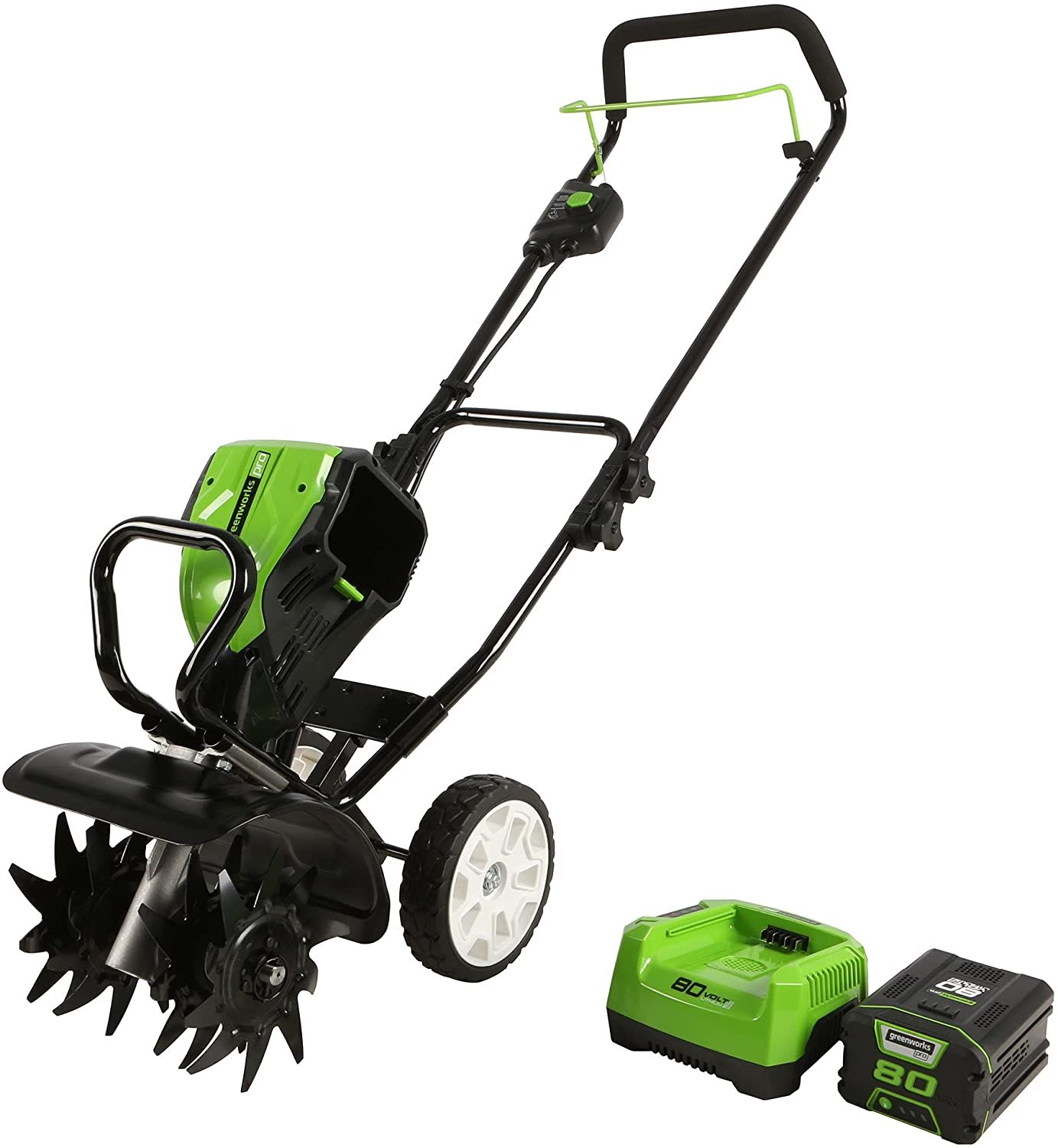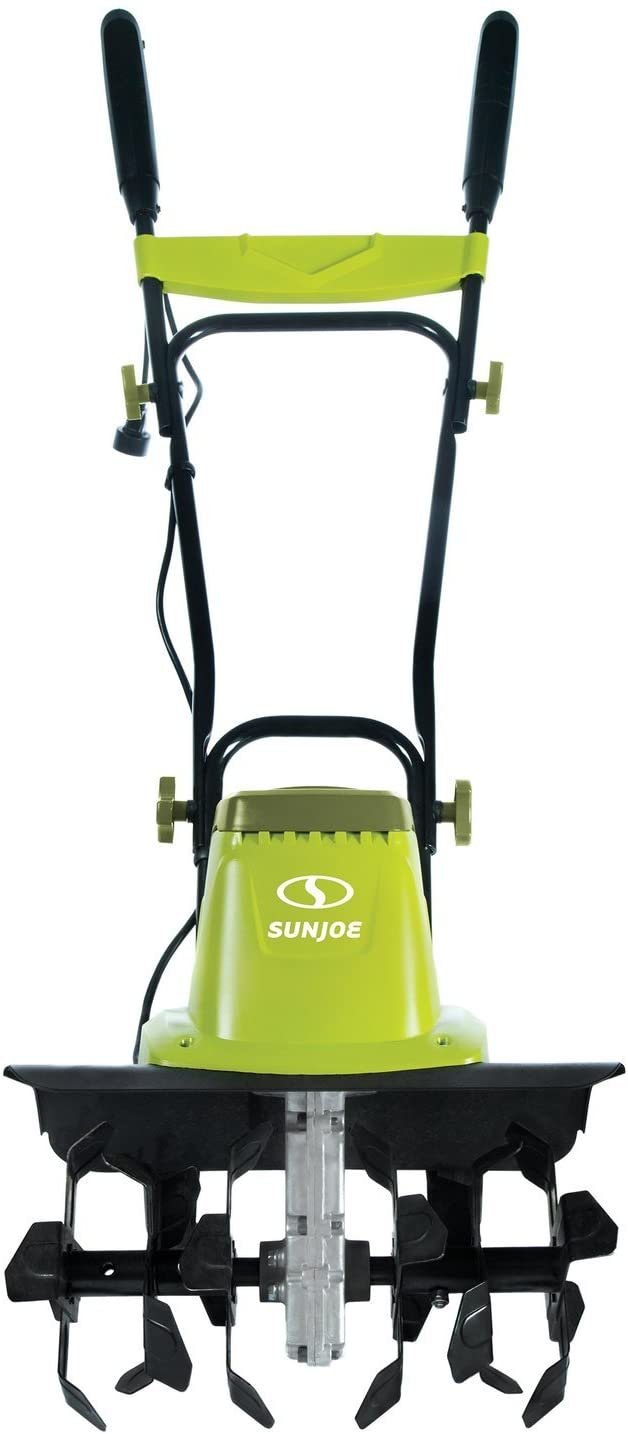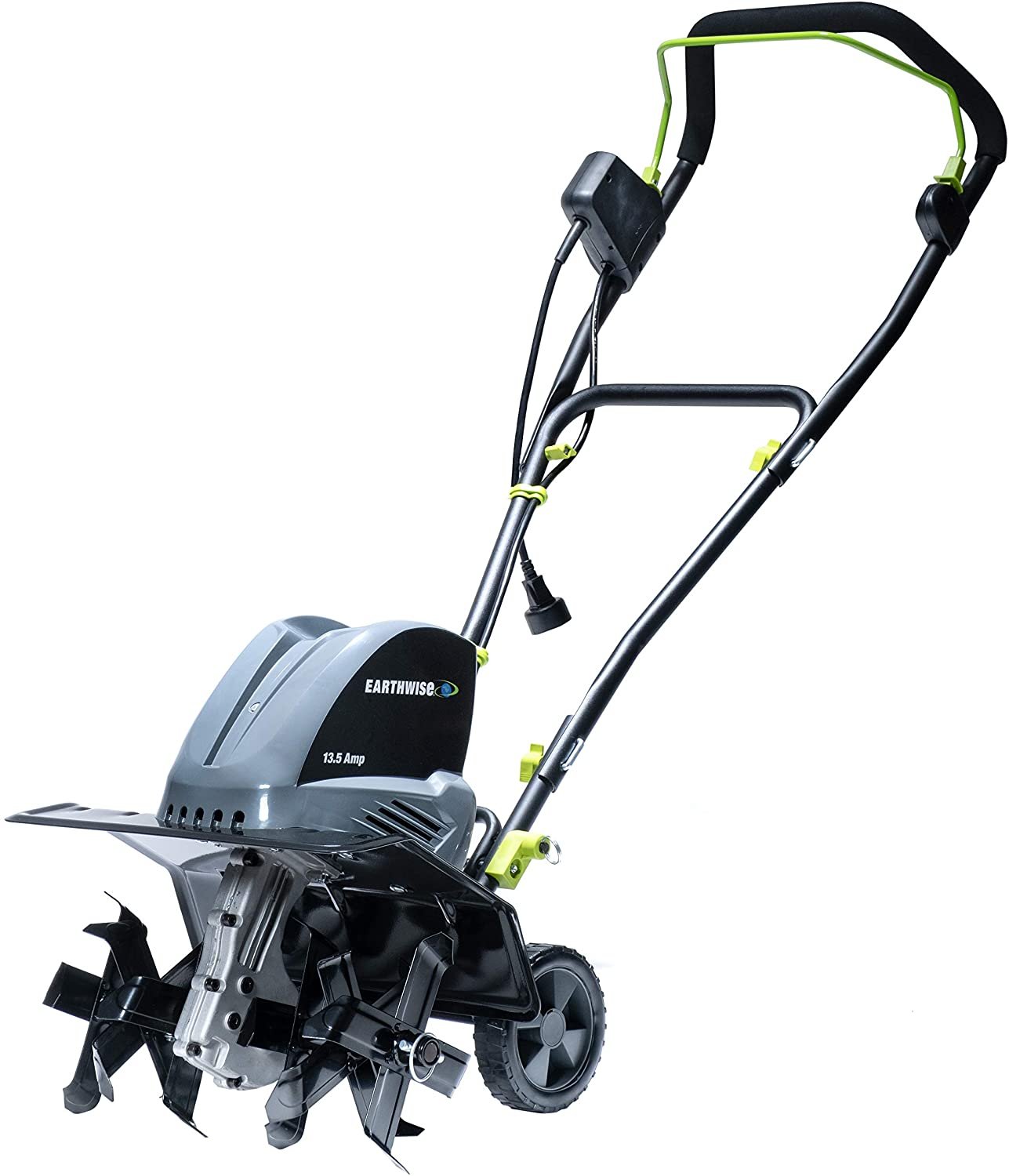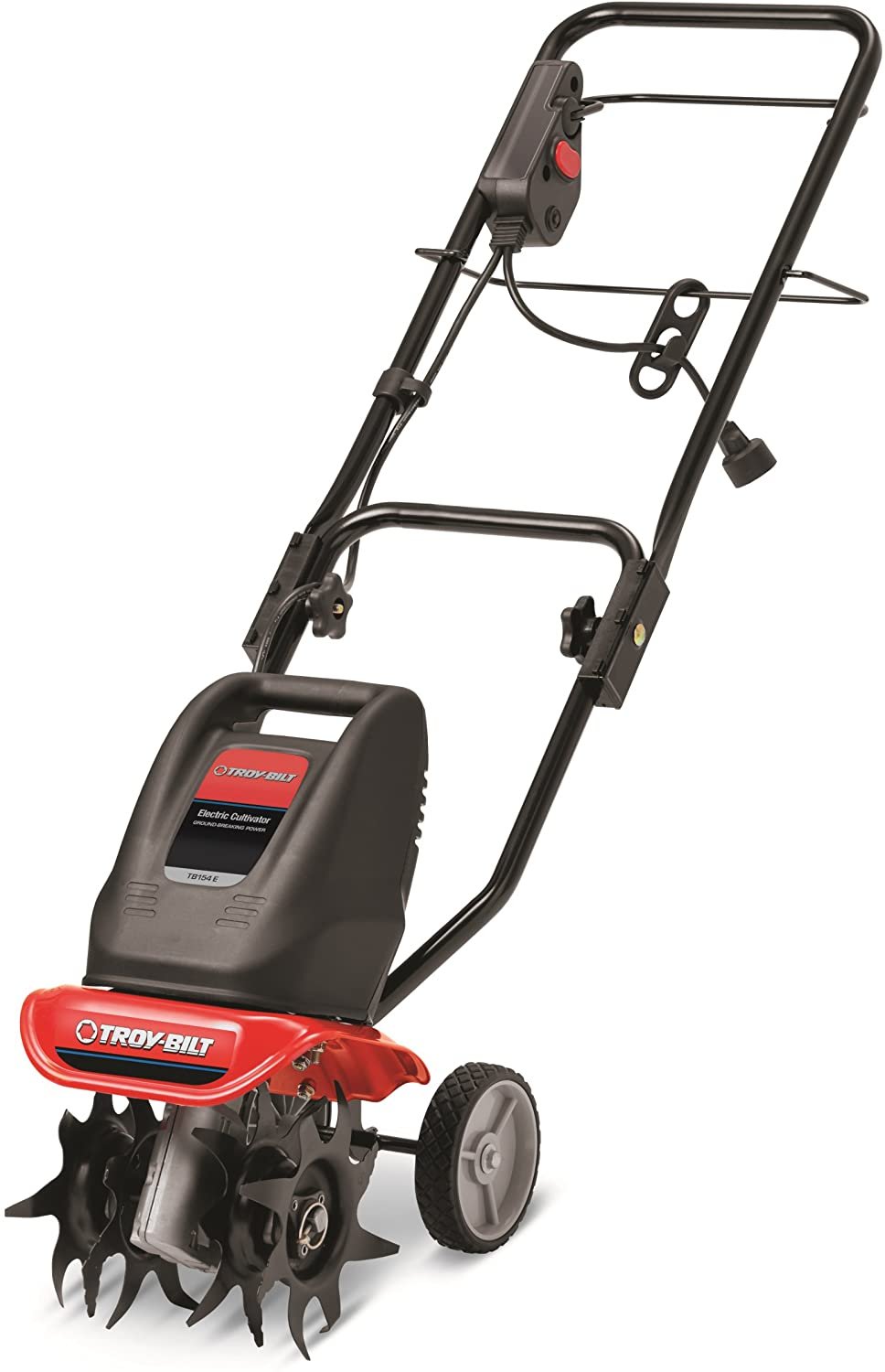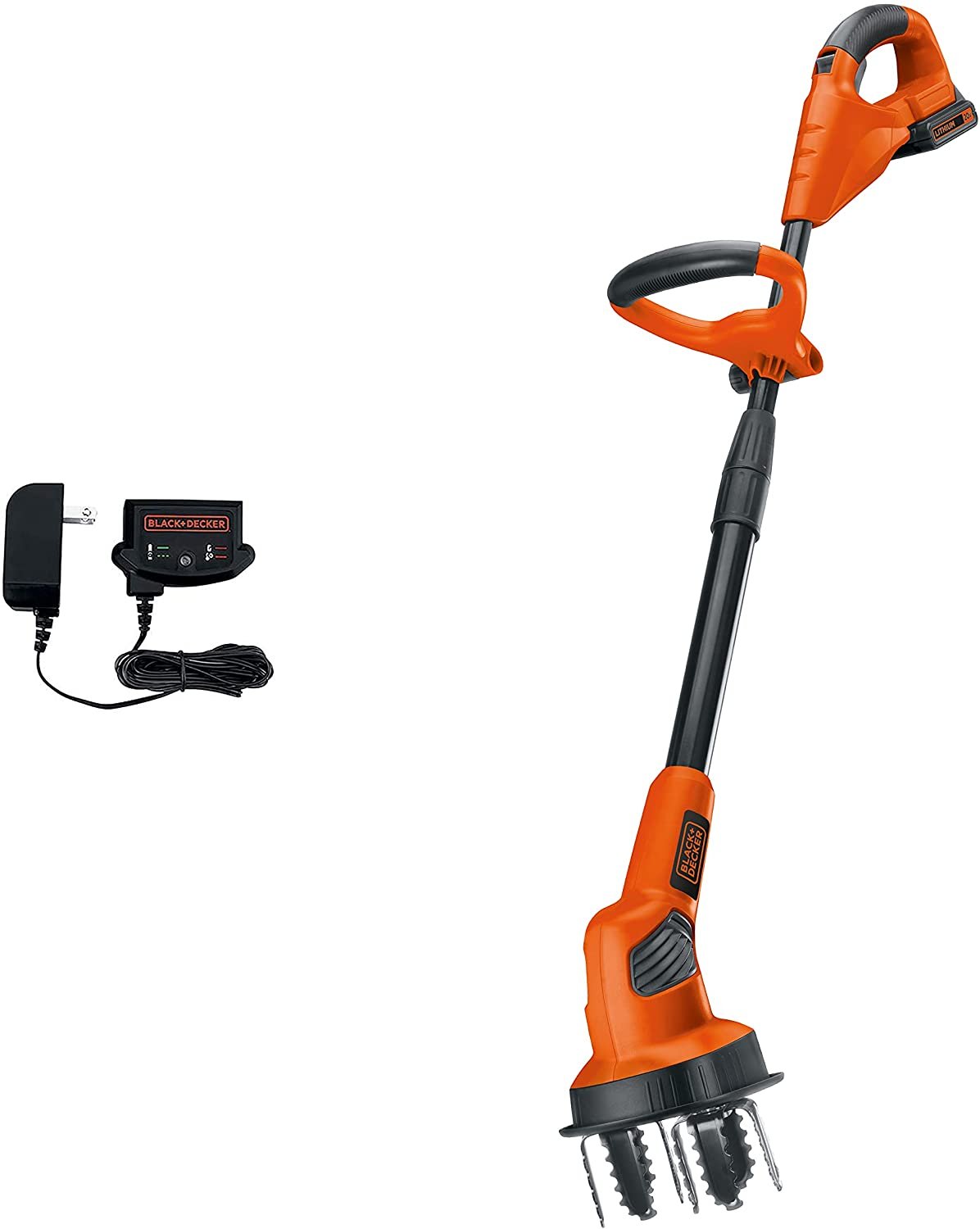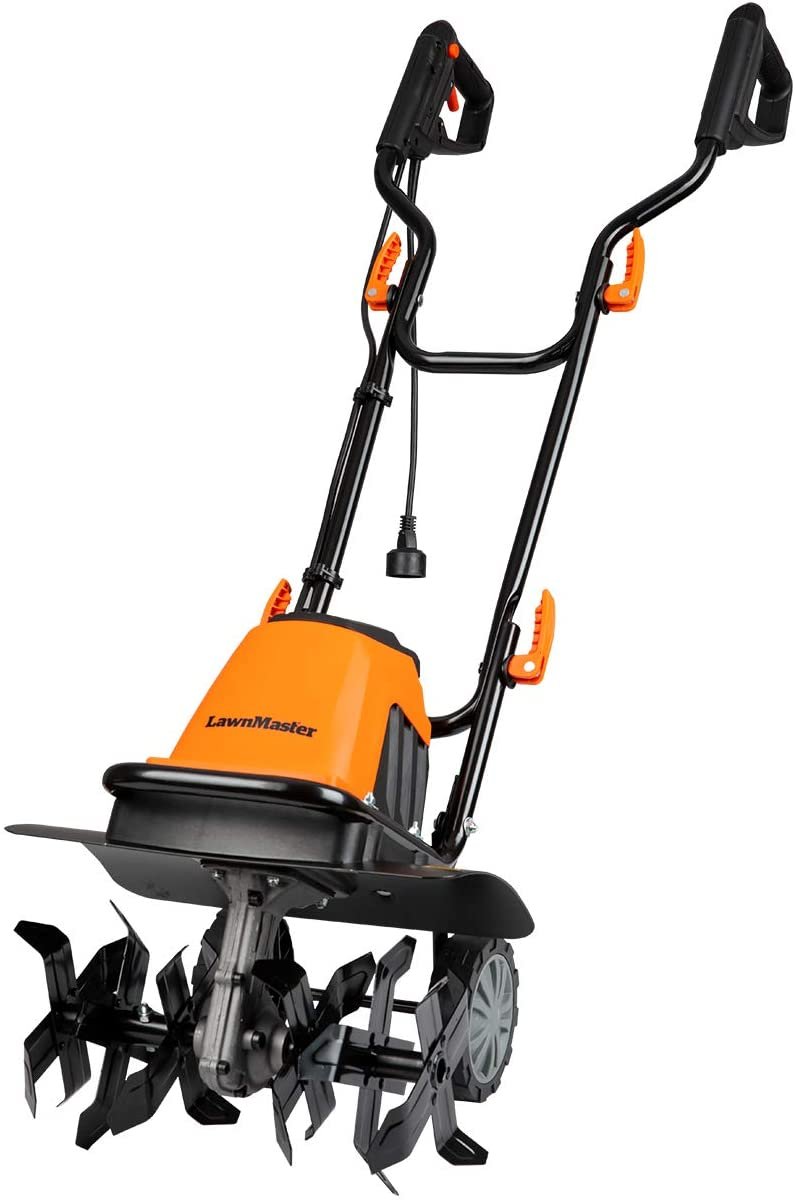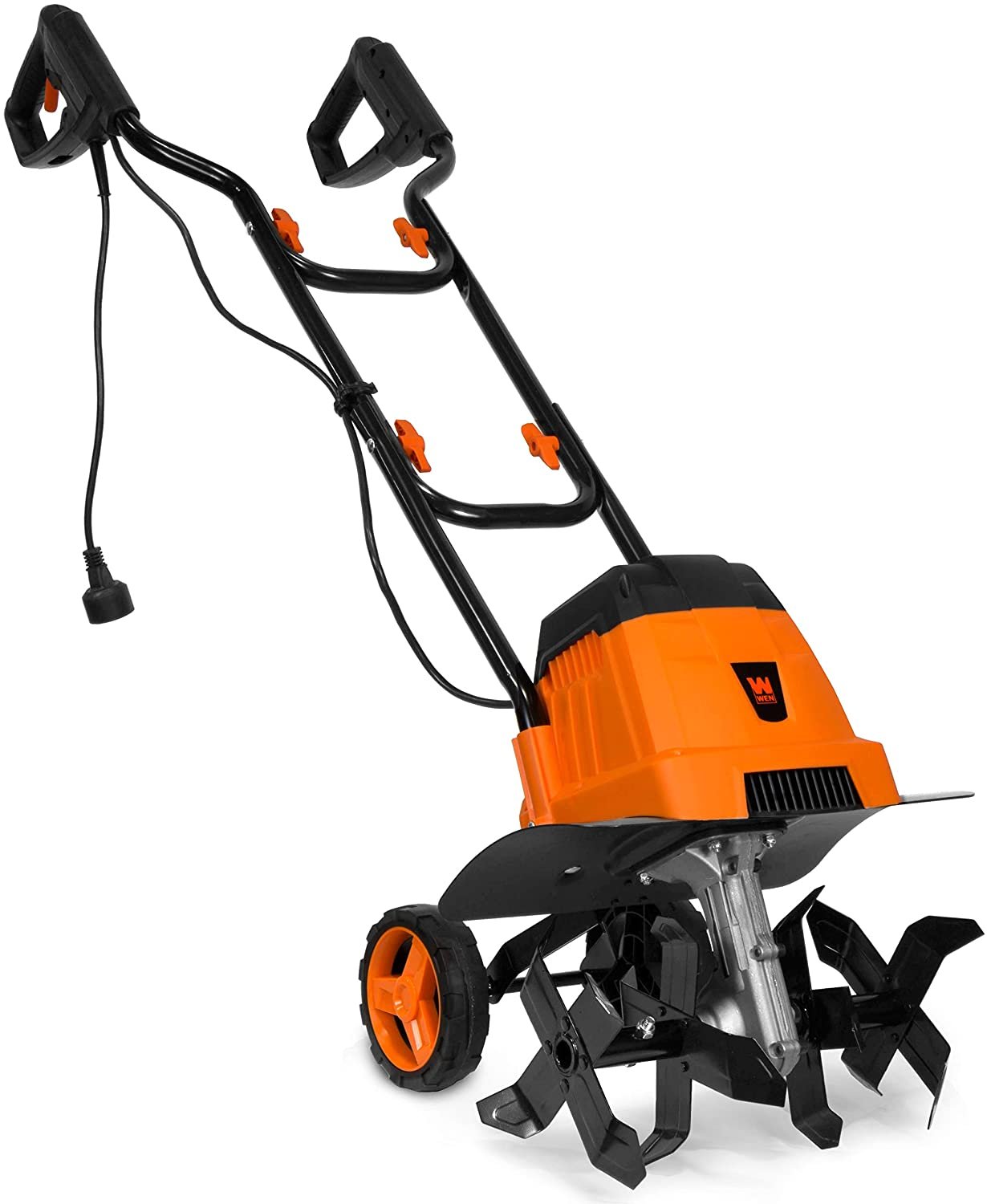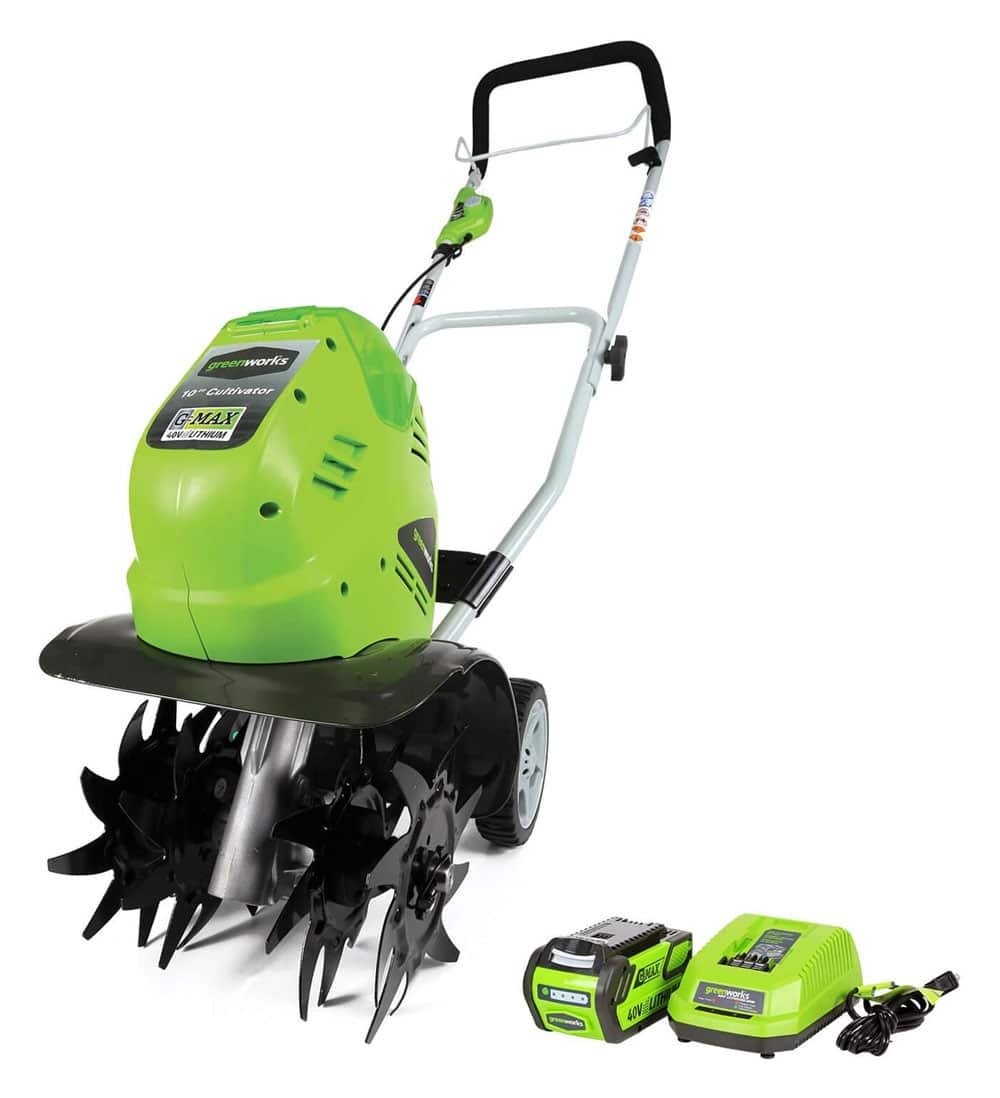You’ll be able to appreciate the countless benefits of the best electric tiller if you’ve ever spent hours sod-busting for a new vegetable or flower bed. An electric tiller can be quiet, simple, robust, and easy to use. They are a gardener’s delight when compared with digging up tons of soil with a shovel. Toiling was once a laborious manual job requiring a garden fork or a rake to loosen the soil. Nowadays, you can have it done by a machine.
Unlike a gas tiller, you can either recharge your battery or use the mains power supply to power electric tillers. They are available in a range of shapes, sizes, and weights to suit different needs.
This powerful machine is capable of churning both hard and easy soil, cutting through small roots easily. You can also adjust the depth or width to fit your needs. Above all, it’s durable, reliable, and inexpensive.
It’s not surprising that there are so many electric tillers. While it is nice to have many choices, it can sometimes be hard to choose which one to use.
We’ve reviewed several tillers currently available on the market to help you decide about the most suitable electric tiller for you. In addition, we also examined the important features that you need to take into consideration when making your choice.
9 Best Electric Tillers Reviewed: Our Top Picks
Let’ review some tillers available in the market. You might be able to find the electric garden tiller that suits your needs.
Greenworks Pro 80V Best Cordless Electric Tiller/Cultivator
The Greenworks Pro 80-volt electric tiller is our favorite tiller. Among all the battery-powered tillers in the market, this cordless model has the most power under its belt. This tiller is part of the Greenworks line of 80V electric power tools that use the same packs of this battery technology. Therefore, it’s very easy to swap out the batteries in any Greenworks tool. It’s plus point if you are already using a Greenworks product, such as lawnmowers.
This tiller features a brushless motor that produces impressive torque, just like gas powered tillers. The brushless motor of the tiller is extremely quiet, so you can tend to your garden without disturbing neighbors. In addition, the tilling width of the tiller is 10 inches, and the tilling width is 5 inches. Gardening has never been this easier!
After a full charge, the 2Ah battery will give you 40 minutes of running time. The tiller can also be purchased in a ‘tool only’, but we prefer the package deal, which includes the lithium-ion battery along with a 30-minute rapid charger.
In short, even though this battery-powered tiller is a little more expensive than other electric and gas tillers, it is absolutely worth buying. This is a tiller that you’ll enjoy working with for many years.
Pros:
- Cordless model
- Powerful 80V brushless motor with impressive torque
- 2Ah lithium-ion battery with rapid charger
- Environment friendly; zero-emission & zero-noise
- Adjustable tilling width
- Lightweight with superior maneuverability
- Easy push-button start
- Minimal maintenance
Cons:
- More expansive than other tillers
Sun Joe TJ602E 16-Inch 12-Amp Best Electric Garden Tiller
The Sun Joe TJ603E is our favorite corded electric tiller among the models available in the market. It is well-built and has excellent power and range. This popular front tine tiller has everything you could want in a garden tiller.
This machine is ideal for tilling small gardens thanks to its 12-amp electric motor and 6 steel angled teeth. In addition to tilling, Sun Joe TJ603E is also a cultivator, making it easy to prepare nursery beds for planting seeds.
The corded tiller has a maximum tilling depth of 8 inches and a tilling width of 16 inches. With a superior tilling capacity, it can churn up hard soil without clumping.
You can manually adjust the wheel height to three settings. As a result, the machine can dig deeper or shallower and is very easy to transport.
It is one of the top lightweight electric tillers, weighing only 27 lbs. Because of its small size, it is very easy to move. However, the light weight of the device makes it susceptible to bouncing on objects. So, be aware when using it.
Pros:
- Easy storage with collapsible handles
- Easy maintenance – no gas or oil to manage
- A reasonable amount of power for an electric model
- The rear wheels can be adjusted in height to make it easier to move around
- A powerful 12 amp motor with spin rotation at 340 RPM
- 6 tines for greater durability and performance
- Strong enough to churn out rocky soil with ease
Cons:
- A long extension cord is required
Earthwise TC70016 Best Corded Electric Tiller/Cultivator
Earthwise TC70016 16-inch 13.5 Amp Corded Electric Tiller and Cultivator combines a cultivator and a tiller. The adjustable device has an ergonomic handle that is easy to store and transport.
Earthwise TC70016 has a tilling depth of 8 inches with the 13.5 amp electric motor and 6 adjustable tines. You can use it to make multiple passes on the same area to get deeper. The tilling width can be adjusted from 11″ up to 16″.
The tiller is great for prepping your garden for planting, regardless of whether you’re looking for tilling vegetable garden or flower bed. It is also ideal for bed clean-up after the season has ended.
It is straightforward to start by pushing the start button. Then, a quick squeeze on the lever will set the tines into motion. The safety switch allows you to quickly turn off the unit. However, some customers have found the switch to be awkwardly located.
The 6-inch transport wheels can flip up or down depending on how deep you wish to dig. You can achieve an adjustable depth feature because of the wheels.
Because it’s so light, it’s easy to carry around and use. However, it can be a bit shaky on hard surfaces. You can do the job with just a little bit of effort and a steady grip. You can also use a cord retention hook to keep the cord in place while you work.
Pros:
- Regular maintenance is not required
- Front tine tiller
- Easy to get to work with the 6” flip-down wheels
- You can till compacted soil with ease
- Lightweight and easy maneuverability
- Adjustable tilling width
- Ergonomic handle
- Cord retention hook
Cons:
- It can jump a little on the hard ground because of its fast tine speed.
- Requirement of a proximate power supply port
Mantis 3550 Best Adjustable Electric Tiller Cultivator
Mantis’ 9-amp electric tiller cultivator gives you the choice of two variable speeds. You can choose from a fast tine speed to till or a low speed to cultivate.
This tiller is a great tool to quickly refresh your vegetable and flower beds. It can quickly transform clumpy soil to the right conditions for planting.
The Mantis tiller weighs only 24 lbs and is very compact, making it great for small gardens and raised beds. Also, the handles can be folded up and have comfortable grips to make them easy to transport.
For depth control, the retractable wheels can adjust to three different heights. The maximum tilling depth is 8″. The lowest setting allows for shallow cultivation of the top 1-2 inches of soil. In addition, the tilling depth is 12-inch which is more than enough for a medium-sized garden.
Pros:
- Powerful 120 volt 9 Amp Corded Electric Tiller
- Durable steel tines
- Ideal for tilling raised beds and smaller gardens
- Two different speed options for tilling or cultivation
- Adjustable depth, with an 8″ maximum tilling depth
- Retractable wheels for controlling the tilling depth
- Compact and easy-to-store
Cons:
- Shorter warranty
Troy-Bilt TB154E Best Durable Electric Tiller Cultivator
This powerful tool includes a rear tine tiller, which offers durability and long-lasting use. This tool is ideal for large farms that haven’t used it in years. It is a great option if you have too many weeds, stones, and twigs on your land that it is difficult to mow down.
The tiller has a width of 20 inches and can be used to till garden beds up to 7 inches. Most importantly, the corded electric tiller has 4 forward rotating tines which are ideal for cultivating an entire garden.
This garden cultivator/tiller has a 305cc engine that prevents you from removing clay soil. Its lightweight and ergonomic design have made it very easy to use.
Pros:
- Strong enough to till heavy clay soil and hard dirt
- It has a very narrow width, making it perfect for use between plants
- 3-way hardened steel tines
- Durable and heavy-duty
- Great for tilling and aerating small gardens and flower beds
- Variable tilling width
- 3-way tines for digging, tearing, and turning loose soil
- Rear tine tillers
Cons:
- Smaller height might be a problem for taller people
BLACK+DECKER 20V MAX Best Hand-held Electric Tiller
Black+Decker, a well-known retailer, specializes in household items such as power tools and garden equipment. The Black+Decker LGC120 is a cordless electric tiller. The battery’s 20V capacity means that it can provide a reasonable amount of power. Still, it is not as powerful as some corded models. If you have difficult areas or large spaces to tackle, this may not be the right tiller for your needs. However, for a small-scale garden, this hand-held tiller is one of the best garden tillers you can find in the market.
The tiller’s battery is part of the 20-volt MAX lithium-ion system. The charge and battery are compatible with other Black & Decker appliances of the same range. You should keep a spare battery charged for emergency as the average battery life is just 30 minutes.
The best part is, the cordless tiller is easy to use and only weighs 11.7 lbs. It is also very light in weight, making it easy for gardeners to move around. Although only two are available, the counter-rotating tines will keep weeds out of the machine’s head.
On the prepared soil, the tiller will perform just as you ask it to. It will also help get air to where it is needed most.
Pros:
- 20V lithium-ion battery
- Dual tines
- Lightweight
- Black+Decker products can use the same battery
- The soft-grip handle makes it extremely comfortable
- Energy Star-rated battery charger
- Counter-oscillating tines avert tangles
- excellent on soft soil
Cons:
- Not fit for rocky soil or breaking new ground
LawnMaster TE1016M Corded Electric Tiller
This electric tiller is compact and lightweight, so it works well in small gardens that don’t require the same power or weight as larger, more expensive models.
The 10-amp LawnMaster is 26 pounds in weight and has six tines that can be used to cut up to 16 inches wide and 9 inches deep. Two ergonomic handles provide a better grip and smoother transport, thanks to the three-wheel settings.
LawnMaster’s tiller will also not take up too much space in your shed or garage, thanks to the four quick-release knobs. These allow you to quickly fold the handle up for storage.
Pros:
- Rust-resistant steel blades
- Anti-clock mechanical clutch
- Adjustable wheel position
- 16-inch tilling width and 9-inch tilling depth
- 10-amp engine with 280 RPM
Cons:
- Height adjustability has a few hiccups
WEN TC0714 Best Lightweight Electric Tiller and Cultivator
WEN’s lightweight and efficient corded tiller is the WEN TC0714. While the electric motor may not be as powerful as some other electric tillers out there, it still rotates at 380 revolutions per minute. It can dig up to 8.7 inches deep.
The overload protection function is a unique feature that you’ll find in WEN’s electric tiller. It protects the blades and outer tines from damage by shutting down automatically if it comes in contact with hard objects.
This tiller is ideal for loosening soil, removing weeds, and retaining water balance. It has 4 reinforced steel tines with 16 blades for cultivating loose soil. Also, You can transport the tiller with ease by using removable wheels, which is very handy.
Pros:
- Lightweight
- Easy to transport and use
- Overload protection keeps you safe
- 14-inch tilling width and 8.7-inch tilling depth
- Deep digging
Cons:
- Vibrates a lot
- Not suitable for damp gardens
Greenworks 40V 10″ Best Affordable Cordless eLECTRIC Tiller
You can cultivate flowerbeds, raised beds, and even vegetable gardens with this cordless tiller, which is a terrific alternative to gas-powered tillers.
Two or four 8-inch tine configurations are available with this design, which has an adjustable depth selection up to 5″ and a tilling width range of 81/4”-10″.
In compact gardens and narrow places, this is ideal. In spite of its high striking rate and high rotational speed (up to 200 revolutions per minute), this machine is light enough to be moved into a raised garden bed.
It’s easy to get around with this tiller because of the 6″ rear wheels and robust gear drive mechanism. Some customers claim that the tiny wheelbase, while good for tilling a small garden, renders the tiller unsteady while not in use.
With this tiller, there is no longer a need to deal with gas and oil, or even a power cord. There are no hazardous emissions. Up to 40 minutes of continuous use is possible on a single charge of the machine’s powerful Lithium-Ion battery, which is comparable to the performance of a gas tiller of a similar size.
Using a set of guiding rails and slots, the battery is supposed to slip right in, according to the manufacturer. If the operator doesn’t properly align the battery, it will not slip into position.
However, because of its length, it may be difficult to use by those who aren’t particularly tall. In this case, it’s best to place the handle backward so that the bent part points down.
Oxygenating soil, prepping a seed bed, cultivating sod, and controlling light weeds are just a few of the tasks this tiller is designed to handle. This tool isn’t meant to be used on rocky or hard ground since the tines can become entangled with long grassroots.
Pros
- Can compete with gas-powered tillers in terms of power
- Relatively good battery life
- Lightweight and user-friendly, even for the seniors
- Made of durable materials
- Affordable
- For cordless tilling, it’s a good choice
Cons
- The installation and removal of the battery may be tricky
- The tines are particularly prone to trapping weeds
Buyer’s Guide for Best Electric Tiller
In our reviews, we have included details about each tiller along with its pros and cons. Now, it’s time for you to research which one is the perfect electric tiller for your home. You may have noticed some terms and words that are ever-present in the descriptions if you have read the reviews. So, to help you make better decisions about your favorite flower bed and vegetable garden, we have created detailed explanations of various features regarding the tillers.
Factors to Recognize Before Buying an Electric Tiller
You now have a better understanding of the various types of tillers. Now it’s time to analyze few critical factors. The factors will determine how you should be approaching the whole tiller-buying business. Let’s dig in!
The Soil Type of Your Garden
The big electric garden tiller can be used if the soil is hard or rocky, even for small gardens. On the other hand, mini tillers are not suitable for compacted soil as it’s very difficult to dig rocky soil using them. They will dig underneath the surface instead of going in. If you plan to use a little tiller, plowing is an alternative.
The Farm’s Size
The size of your garden will play a major role in picking the right tiller for your new garden. You should note that a smaller electric tiller is better than a bigger, gas powered tiller if you have a small yard. A gas-powered tiller will be better suited for large gardens.
Your Budget
Of course, we don’t have unlimited funds for our gardens. Prices for tillers can range from $100 to $3000. That’s why it is important to find a tiller within your budget that doesn’t compromise economic efficiency. Because it is not worth buying a smaller tiller or one that isn’t powerful enough for the job.
However, it is a waste to spend hundreds of dollars on a machine too powerful for your small backyard. Finding the right balance is key.
The Versatility of Tillers
Many electric tillers can be equipped with multiple attachments and accessories. You should always consider the opportunity of purchasing a multi-tool tiller that can be used with additional accessories. Keep in mind that versatile tillers are subject to the same selection criteria as stand-alone tillers. So, you shouldn’t compromise quality for versatility.
Breaking New Ground or Re-tilling
We all know that it is challenging to break new ground. This is why you need a sturdy tiller. However, a smaller tiller may be sufficient for you if you are re-tilling.
Most Significant Features to Consider While Purchasing an Electric Tiller
There is no universal tiller that works for all types of gardens. An electric tiller’s overall performance can be affected by many factors. The tiller’s power, speed, size, power source, and ease of use all play an important role in how it performs in specific conditions. When choosing the ideal electric tillers, keep these things in mind.
Corded Tillers or Cordless Tillers
There are two types of electric garden tillers: corded and cordless. You have the option to pick between a corded or cordless model, just like all power tools.
The difference between corded and cordless models is very simple. You need to have your model close to a power outlet. In contrast, cordless tillers are free to move anywhere as they are not bound by a power cord and electrical outlet.
In price and power, the common corded electric tiller is cheaper than its battery-powered counterparts. The corded tillers can run for almost unlimited time, unlike cordless electric tillers that depend on the battery capacity. However, they can only reach as far as the power cord will allow, so dragging an electrical cord around can prove to be a hassle as well as a safety issue.
A cord retention hook is used on corded models to keep the cord from getting in the way of the tiller’s blades and wheels. Even though they are smaller in power, slower and more expensive cordless garden tillers offer great maneuverability and portability. The average cordless tiller runs for 30-60 minutes. However, gardeners can extend this time by purchasing a few extra batteries.
Whatever you choose, it all comes down to your personal preference and the circumstances in which you intend to work. In any case, an electric tiller is always the better option than the gas-powered models.
Tiller vs. Cultivator
You will have noticed that the terms cultivators and tillers are used in the reviews. Many of the models reviewed above can be used for cultivation and tilling, so what is the difference?
You can think of a garden tractor as a mini-farm plow. For instance, garden tillers work in the same manner as a farmer’s plow. They lift up the soil in particular areas. Large chunks of dirt are broken up, and the dirt is then turned and rotated. Consequently, this allows air to penetrate the soil. Aerated soil is full of nutrients that encourage seeds and roots to grow.
A cultivator can be used to loosen soil from areas that have been used for planting. Cultivators are skilled at dealing with weeds in areas where crops are growing. In addition, a cultivator is generally smaller and easier to use than a tiller.
So, if you are working on new ground and hard soil, then a tiller is the best choice. On the other hand, to work on already prepared soil, a cultivator would be the best bet. However, you can combine the functionality of these two options and buy a tiller cultivator instead.
Tiller Tines
Each tiller has a different type of tine, including the ones in the front, back, or counter-rotating. Each type of tiller has its pros and cons, depending on the intended use. Keeping this in mind, the buyer can decide which type of tines is best for them. Let’s discuss them briefly.
- Front Tine Tillers: Tines are placed in the front of the tiller. The wheels are located towards the rear end. The majority of models have front line tines. Although these machines are simple to use, it is important not to run them over freshly-tilled soil to compact them. Most importantly, it won’t allow enough air to promote good seed growth if the soil is too compacted after it has been tilled.
- Rear Tine Tillers: The rear tine tillers are the alternative to a front tine tiller. Tines are placed in front and wheels in the back. This change in design consequently prevents tilled soil from accidentally becoming compacted.
- Counter-Rotating Tillers: This type of design has rotating tines that move in various directions, just like the name.
Tilling Depth and Width
You can run more often up and down a patch of ground if you have more tiling width. This will save you energy. It is more efficient to have a larger area to work with.
Likewise, a good tilling depth will allow you to properly break down the soil. This, subsequently, will allow for proper growth and allow you to incorporate organic matter directly down to the roots.
Sometimes, controlling tilling depth can be as simple as working your plot until the desired depth. If you are only looking to till the surface, having the ability to measure or fix depth is an advantage.
Lastly, you must also consider motor power when considering tilling depth and width. A motor power supply is necessary to allow a machine to dig very deep and wide. For example, a six-tine tiller equipped with a small electric motor will do the job well, but it may struggle to cultivate the new ground. However, a four-tine tiller equipped with a powerful motor can churn away all day and will likely get the job done faster than you anticipate.
Power
The majority of electric tiller manufacturers will tell you how many amps the tiller draws. Unfortunately, power is not always measured in watts.
However, the amps can give an indication of the machine’s power. A unit that draws less than 6 amps is not recommended for cultivation or very shallow tilling. A standard range is between 8-10 amps. Just keep in mind that a higher value indicates a more powerful unit.
The situation is slightly different for cordless electric tillers. You can compare battery power by looking at the volts. However, it is worth considering the amp-hour (Ah) too. Basically, the higher these two values are, the more powerful the machine will likely be.
Maneuverability
An electric tiller can be used by anyone who is reasonably fit. However, a heavier and larger tiller will demand more effort and be more cumbersome than a lighter and smaller one. Although larger tillers can cover more ground in a shorter time, they are trickier to use and require more effort from the gardener. Gardeners can achieve the perfect balance between ease of use and performance with a tiller that has adjustable tines.
The small cultivators, which look like weed whackers, weigh approximately ten pounds. They are useful for turning over small areas or maintaining between rows. A full-sized electric garden tiller weighs 20 to 30 pounds.
Although wheels are helpful for maneuverability, some machines have no wheels. Also, you need to think about the actual act of tilling. You will often work on uneven ground, sometimes at a depth of six inches or more. You will need to have enough strength to lift the tool off the ground if it wanders or gets caught on a rock.
Additional Features
Most corded electric garden tillers feature similar designs. The motor is typically placed above the tines and connected to a handle assembly that contains the controls necessary for the machine’s operation.
While the designs may look identical, there are some additional things you should be aware of before buying. Pay attention to:
- The number of tines: Some models come with 2, 4, or even 6 tines. Buy the right tiller that fits your demand.
- Rotational speed: Look for a maximum tine spin speed greater than 180-200 rpm.
- Variable speed: Some models offer variable speeds that allow you to till slower for light cultivation.
- Folding and carrying handle: These make transportation and storage of tillers much easier.
- Wheels: They are again designed to improve maneuverability on hard surfaces. Choose the tiller that fits your small garden.
- Cord lock: A cord lock system makes sure your tiller stays in place, even if it is accidentally unplugged.
Conclusion
Knowing exactly what you should look for is an important part of your quest to find the finest garden tiller. This will help you make an informed decision about which garden tiller is the best one for you.
Conclusion? The bottom line is that these machines are supposed to work hard. Don’t fall for the lure of a cheaper model you think might seem OK. But you will likely end up disappointed. You’ll enjoy years of reliable service if you buy the top-notch electric tiller that you can afford. In short, you will always get what you pay for in this market.
FAQs
Are a garden tiller and a cultivator the same?
Ans: Cultivators are typically smaller than tillers. They are used to mix and loosen small sections of soil that have been tilled. Cultivators, on the contrary, are designed to break down larger sections of soil that are more difficult. Cultivators are responsible for preparing existing garden beds for planting, while tillers help create new ones.
Are electric garden tillers any good?
Ans: An electric garden tiller is very good for small gardens and medium-sized fields. These electric tillers are eco-friendly and very efficient. A gas tiller requires gas or oil and demands constant maintenance. An electric tiller is free from those hassles.
Are electric tillers as good as gas tillers?
Ans: Electric tillers are perfect for small gardens, while gas tillers work well for larger ones. An electric tiller is smaller than gas powered models. This is precisely why corded tillers in small areas are not recommended for heavy-duty tasks. In short, for commercial purposes, gas powered tillers are the best option.
Can you use an electric tiller to remove grass?
Ans: A tiller is capable of removing grass by removing the roots from the soil. It can also break up large chunks of sod into smaller pieces. However, you will likely still need to use a shovel or a rake to get rid of the smaller pieces.
Do I need safety gear while working with an electric tiller?
Ans: To avoid slipping, you should wear sturdy shoes, gloves to protect your hands, safety glasses, or a light face shield.
How much maintenance do electric tillers require?
Ans: An electric garden tiller doesn’t require oil and filter changes. Most of the time, it’s only a matter if you check that everything is working properly and that no damage has been done to any electrical cables or fittings.
What is the best electric tiller to buy?
Ans: If you want a cordless model, then our recommendation is Greenworks Pro 80-volt Electric Tiller. It’s the best cordless model in the market. On the other hand, if you opt for a corded model, Sun Joe TJ603E will be the most beneficial for you.

